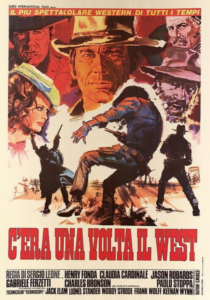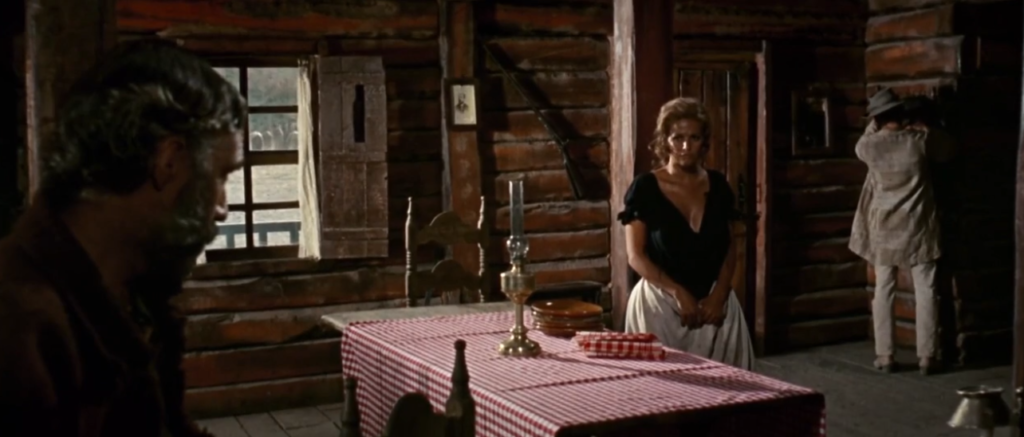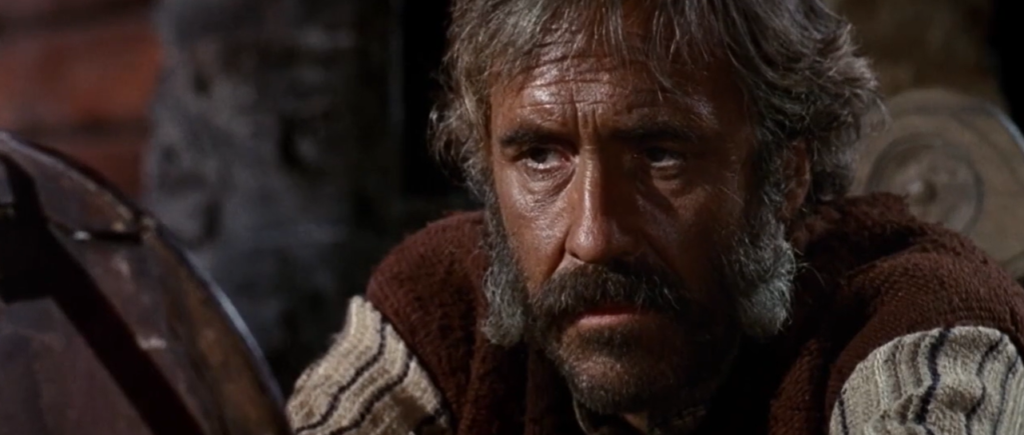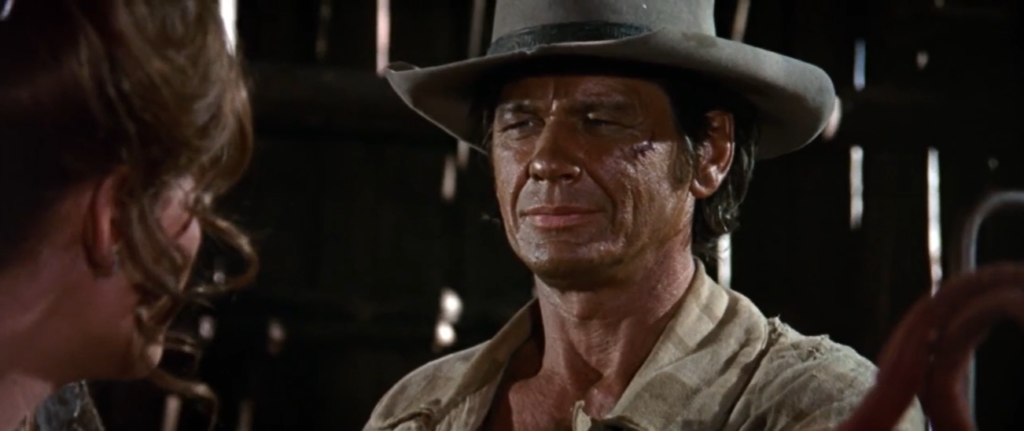Once Upon a Time in the West (1968)
“People scare better when they’re dyin’.”
|
Synopsis: |
|
Genres, Themes, Actors, and Directors:
Response to Peary’s Review: … all of which means that “in the new matriarchal West, money will be more important than the gun and super-gunfighters will be passe, part of the Western folklore.” In Cult Movies, Peary elaborates his thoughts on how this “mythological progression” came to be across Leone’s westerns, writing:
Back to GFTFF, Peary notes that “in an incredible scene that recalls the family massacre in John Ford’s The Searchers” Fonda’s Frank (he “finally got to play a villain!”) “wipes out Brett McBain (Frank Wolff) and his children”: … simply so that his boss “can use McBain’s land for a railroad station” — a crucial driver of the narrative, with ongoing impacts for everyone involved. Meanwhile, Frank’s sadistic past comes back to haunt him, as we gradually learn why Bronson is so insistent on capturing and killing him. Peary posits (and I agree) that the “film is incredibly ambitious, splendidly cast, beautifully shot (no one uses a wide screen better than Leone)”: … “hilarious, erotic, psychologically compelling, and wonderfully scored by Ennio Morricone;” as Peary notes, Morricone’s score “shifts easily from dramatic to ethereal to ironic to comical,” offering “haunting melodies, musical motifs, theme songs, and choral numbers that comment on the action, add humor, and help move the story forward.” He points out that “among the many highlights are the lengthy, humorous title sequence in which three villains” (Jack Elam, Woody Strode, and Al Mulock*) “await The Man’s arrival by train (only to be killed by him)”: … “Frank’s seduction of Jill” (I’m not a fan of this sequence; she’s clearly terrified and simply doing what she needs to do, as she always has, to survive — though it is creatively filmed): … “the elaborately staged gunfight between Frank and The Man (how splendidly Leone uses space and close-ups)”: … “the final scene between Cheyenne and The Man”: … “and seeing The Man ride off into mythology at the end of the picture.” In bit parts, watch for Keenan Wynn as the Sheriff of Flagstone: … and Lionel Stander as a barman. * Note: Mulock — a Canadian character actor who trained with Lee Strasberg — committed suicide by jumping out of his hotel window right after filming his scene for this movie; according to one source, he was purportedly depressed and drug-addicted and couldn’t find a fix. Wolff also committed suicide the following year. Notable Performances, Qualities, and Moments:
Must See? Categories
(Listed in 1001 Movies You Must See Before You Die) Links: |





























